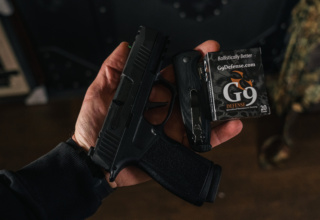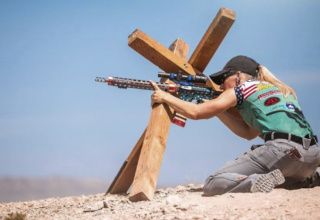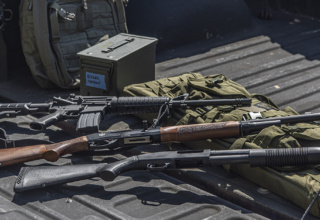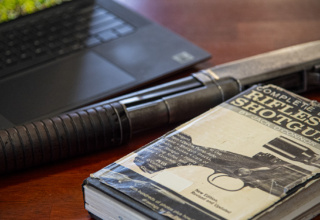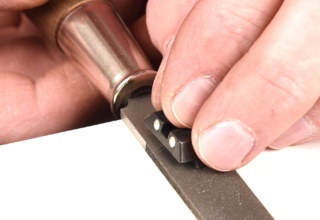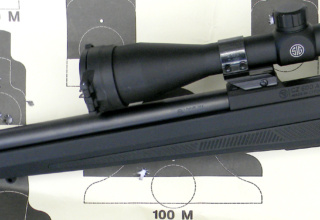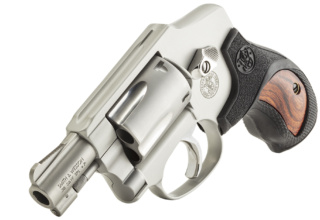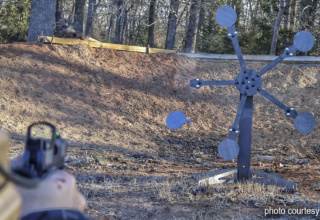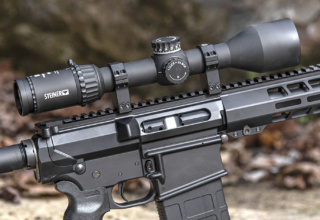In a defensive encounter, high-volume does not eclipse proficient handling and accurate shot placement. Here’s what you need to know.
by Bob Campbell
A fellow I worked with for some time once said that luck overrides training and proficiency. He wasn’t the best shot I ever knew, and he said that the more he shot the luckier he got. In other words, the more bullets fired the more likely he was to get at least one hit — somewhere on the target. He managed to consistently qualify with the lowest passing score in the agency and make it to retirement.
Unfortunately, this mindset has become prevalent and is reinforced by trainers and shooters every day — some without realizing it. Gunmakers answer the demand for higher capacities, often enough with a loss of handling qualities. Perhaps when we don’t have a great capacity or ammunition reserve we bear down and concentrate more. Or perhaps not. Some fire all six rounds in their revolver; some spray and pray with fifteen rounds from the semi-automatic. Teaching double taps and controlled pairs is good and stressing taking cover is important. But for some, training goes out the window when confronted with a threat. Practicing through repetition until you learn to concentrate on marksmanship is the only way to fight these tendencies. Accuracy can make up for power in a firearm. The reverse is seldom true.
Let’s look at common issues that should be carefully studied when it comes to firearms training and chasing capacity over accuracy.
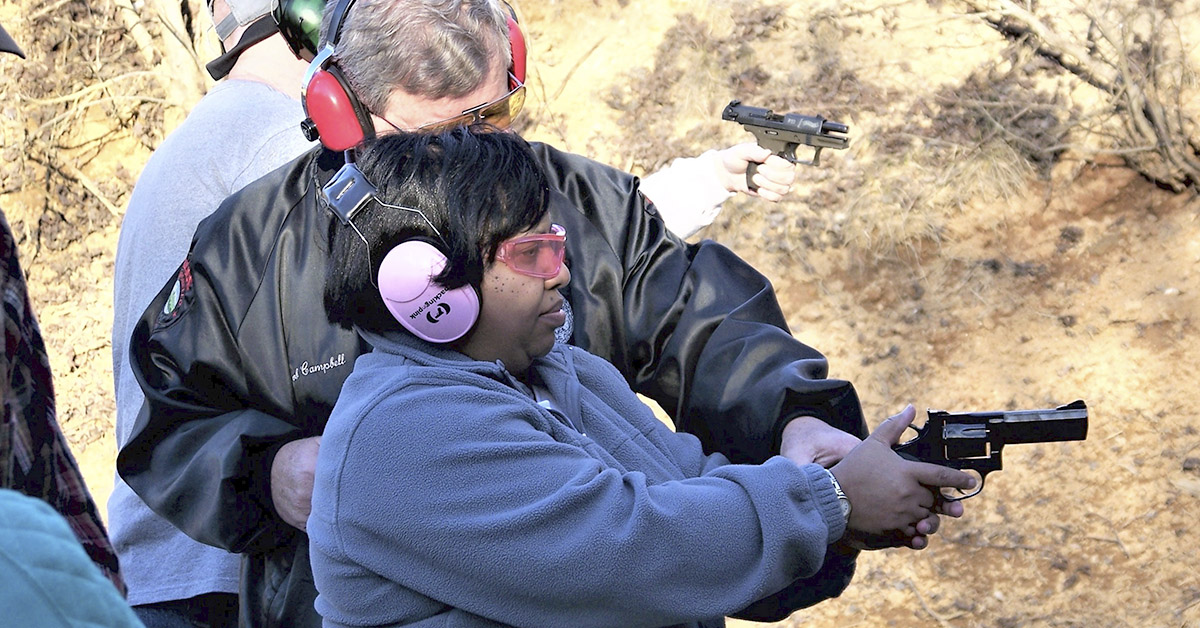
Handguns
If you have ever sat in a deer stand and heard a fast BAM BAM BAM BAM BAM BAM break the morning calm, you know the shooter missed. Whether a .30-30, BAR, or semi-automatic shotgun, that guy missed. For the same reason, standing behind new students at the five-yard line during training, if I hear a staccato rip of fire, I know they missed. Perhaps they didn’t miss the entire paper, but they missed!
The handgun is the least powerful of the three firearms that may be chosen for home defense. We need to make accurate fire. It is foolish to use a handgun for home defense if you have ready access to a long gun. It is also foolish to think you will be able to use your handgun to fight your way to a long gun! There isn’t time. So, crush that oft repeated fallacy with a strong shrug and get rid of erroneous information. As for the “bag” gun or “truck” gun, more on that later.
For accuracy, each shot must be regarded as a separate event. A string of fire isn’t the goal. An accurate shot is followed by other accurate shots. The only important shot is the one you are firing at the moment the trigger breaks. A good shooter will balance speed and accuracy. Be that good shot before you speed up.
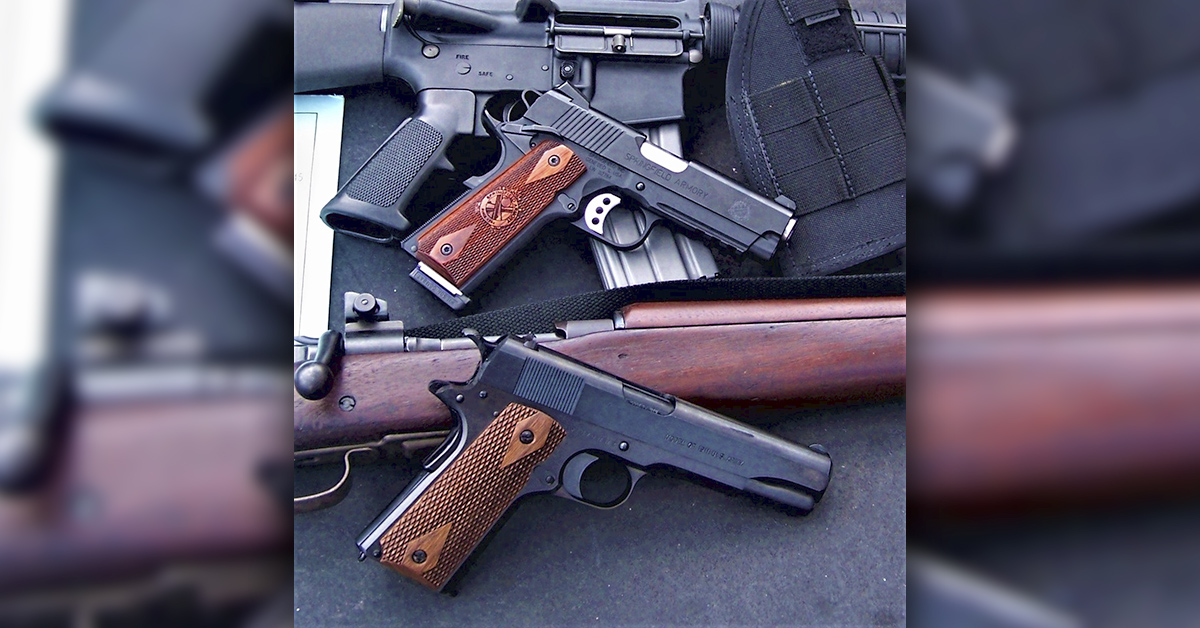
Training should involve firing at a certain measured range to gauge proficiency and the balance of speed and accuracy. It isn’t a running sprint covering a dozen targets. It isn’t hosing down a target. Firing at close range demands a different skill set — with the basics of trigger press, sight picture, and trigger control the foundation — then firing from 15 yards. Each event is separate. Fire a gun, reload, check the results. Some forget to use their sights at close range and have bad results. At longer range, they are accurate as they concentrate on their sights. Pausing and confirming the results at each range leads to growth. You will not be able to pause and check results in a gunfight! But at the range, there’s no use wasting ammunition on misses.
Once you have a base level of training, be sure to take shots at both known and unknown distances to build skill. Threats don’t present themselves at established distances. And consider firing from cover, such as behind a barricade. When moving, do you think the opponent isn’t going to move if you hit them with gunfire? If you miss, they will probably move as well. They won’t stand still as you hose them down. They will move, and this reinforces the need to understand that each shot is a separate event, not a string of fire. Fire, realign the sights after recoil, and fire again. Accurate fire is everything. The bad guys shoot back, otherwise there is no justification for firing your gun.
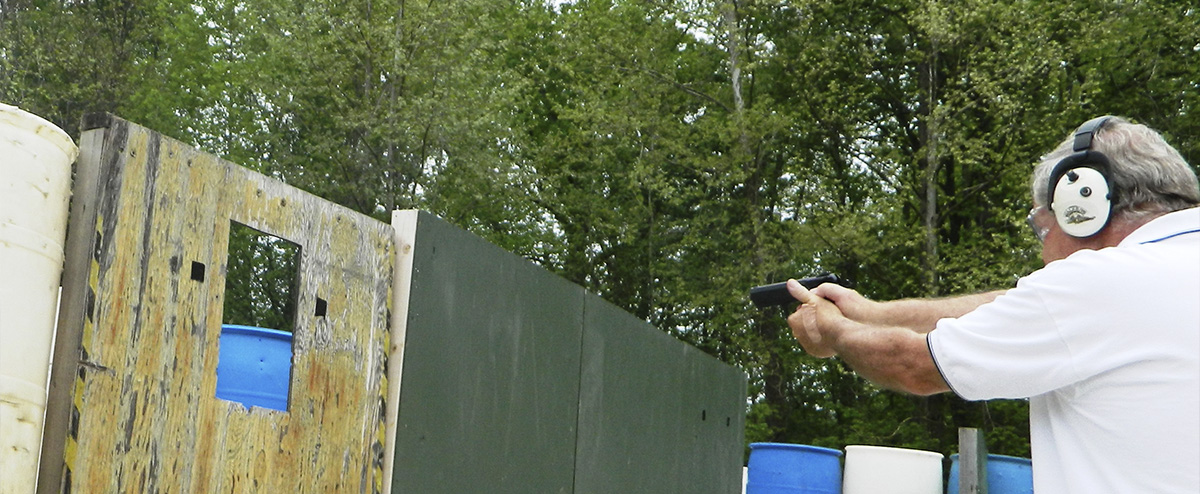
One of the worst tradeoffs in accuracy and power and a step down, in my opinion, was when many agencies adopted the Smith & Wesson Model 59 9mm. They should have kept their revolvers until better 9mm self-loading handguns were available. The grip frame fit most hands like a 2×4. Accuracy was poor and reliability wasn’t stellar. An accomplished shooter and good friend took his M59 to instructor’s class to avoid reloading his revolver nine times during the 60-round course. He barely qualified. This lash up was so poor that many agencies had to abandon 50-yard training and limit qualification to 25 yards. Agencies that later adopted the Beretta 92 and SIG P226 had a much more accurate firearm than the Smith & Wesson 59. But the damage was done. Training now revolved around getting as many hits on the target as possible. Pass or fail was the grade and bonuses on the paycheck for good shots were a thing of the past.
That’s history, but the concept and where we started a downhill slope are obvious. A high-capacity pistol isn’t a bad thing on its own, of course. A good reserve of ammunition is comforting. While I prefer a 1911 .45 or Glock 30, I often carry a Glock 19X or SIG P365XL. These are reliable handguns that are more than accurate enough for any chore I am likely to encounter. But I don’t rely on getting lucky with one of those shots. I rely on getting a first-shot hit to the part of the threat where the bullet will do the most damage.
Sometimes, the application isn’t just misunderstood, the firearm is ruined for the intended purpose by misapplication, such as chasing capacity at the expense of reliability.
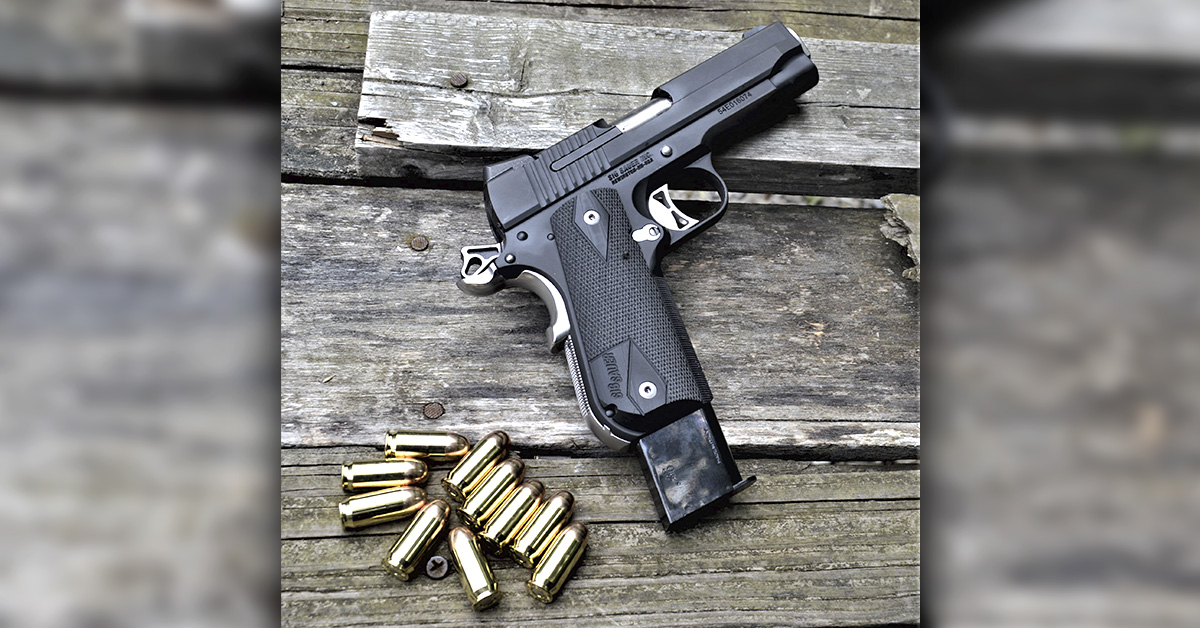
I have lost count of the cheap plastic magazine floor plates I have seen fail in training. One fellow purchased a Glock 43 9mm. I have one I use for a backup. It slips nicely in an overalls pocket, is accurate enough, and always functions. So, the fellow adds an oversize magazine with a big plastic floor plate. The pocket gun no longer fits the pocket. And one of his plastic magazine extenders broke.
Another type of handgun I feel is an abomination (ask me what I really think) is the high-capacity 1911. Well, you need to see my hands. Not the smallest nor the largest but they get me by well in life until stretched by an over-large frame. I am one that finds the Glock 20/21 too large. The Glock SF frame is just right, and I appreciate Glock addressing this matter. A high capacity 1911 is a muck-up in my opinion. In the 1911, we have a pistol that is among the fastest in the world for an accurate first-shot hit and fits most hands well. Add the big magazine and we morph it into a beast that does not fit most hands well and isn’t as fast and accurate — even for those who have digits sufficiently large to handle the piece.
To be fair, other handguns modified into high-capacity pistols, such as the Shield Plus and the Ruger MAX, are models of hand fit. But they are different beasts. I am open to using pistols with a greater reserve of ammunition, and I find the fast handling Hi-Power a better pistol than a double-stack 1911. On the other hand, the new .30 Super makes sense not as an alternative to the 9mm but as a more powerful alternative to the .380 ACP. Low recoil and easy slide manipulation are the advantages. Wound ballistics, while not in the league with the best 9mm loads, are better than the .380 ACP. Putting this cartridge in a 9mm-size handgun increases magazine capacity and lowers recoil. For some folks, it is a great combination.
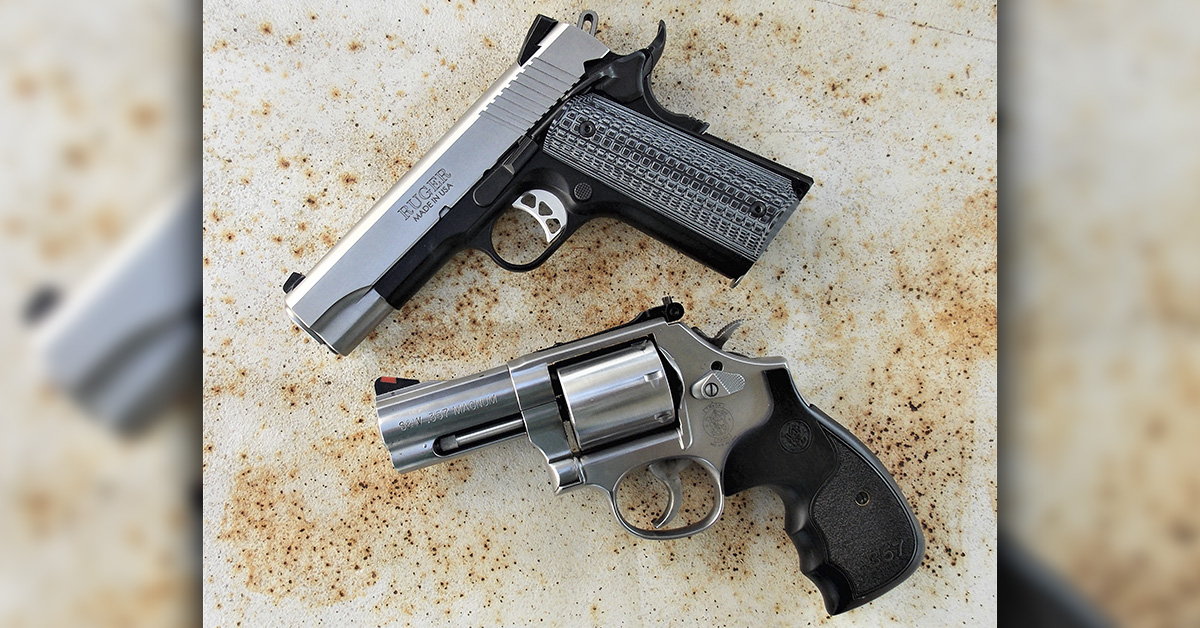
It would be foolish to not take advantage of a greater ammunition reserve if we can have it. But it is more foolish to adopt a pistol based on ammunition capacity while sacrificing handling and fit. There is a difference between firing a pistol well enough and controlling a pistol with too large a grip.
In some uses, capacity is nice to have. The new breed of 17- to 20-shot .22 pistols like the Kel Tec P17 and SIG P322 are superbly fun guns. The bigger the cartridge the less the fun. In a personal defense environment, accuracy, reliability, and fast handling are far more beneficial than a high round count. We shouldn’t rely on capacity to get the job done.
Rifles and Carbines
Regarding defensive rifles and carbines, I have less kick with capacity. Takeover robberies, home invasions, body armor, and gangs make one choose an AR-15. The rifle has the ammunition reserve in a 20- or 30-round magazine. The AR-15 is the model of reliability, and the rifle is easily handled. The rub is that when the AR-15 is properly handled, a minimum of shots is needed. A center hit with the 5.56 NATO/.223 Remington and it is cancel Christmas. An AR-15 rifle has good hit probability and allows homeowners to defend themselves against the odds. Just the same, two or three shots is all that will be needed against a single attacker. Against a gang, a full magazine should be good insurance.
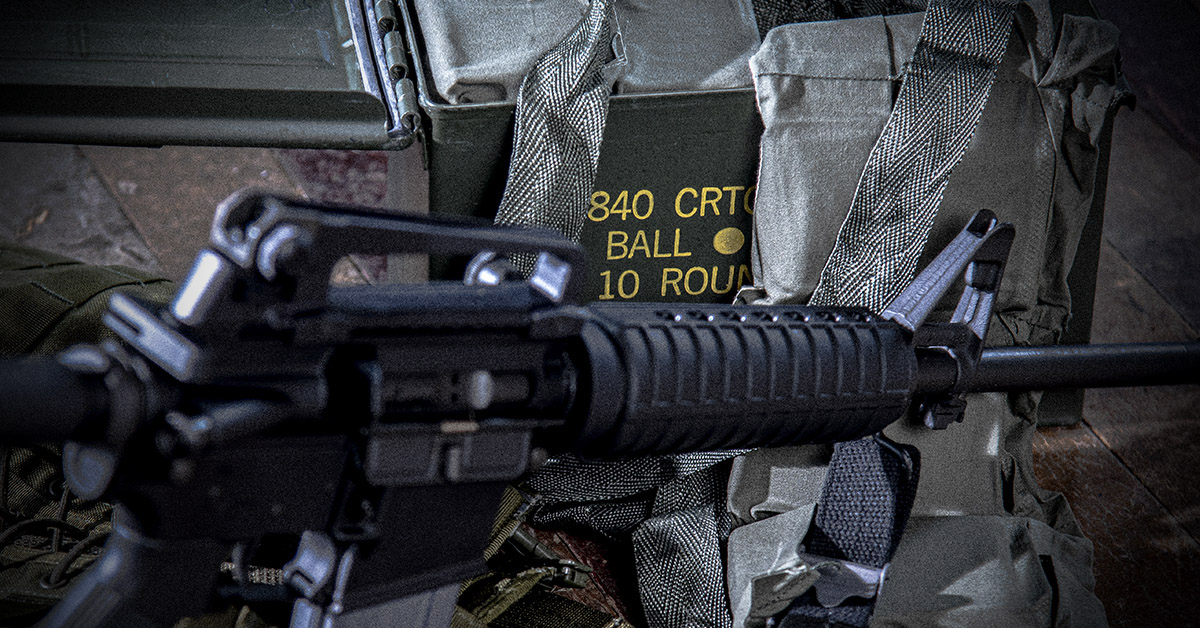
Just don’t bulk up the AR-15 with unnecessary, over-extended magazines. I have yet to see one that met my reliability standards. Why muck up the AR’s superb handling with all that weight and compromise reliability? If you are awakened in the night and you need something right now, there is nothing like an AR-15. Don’t screw it up.
Now, a note on bag guns
It seems to be a pop culture trend to carry a carbine or PCC in a gun bag that looks like a clothing bag or something similar and to practice getting it into action. The best I have seen at this is fifteen seconds. Unzip, unfold, grab the gun, and make ready. You will be dead, dead, dead, and riddled with holes in a few seconds.
I cannot think of another needful comment on this concept.
Shotguns
The shotgun is deployed often by feel. It handles quickly and offers excellent hit probability. A fast-handling pump-action shotgun or a well maintained semi-automatic is a great choice for home defense or area defense.
I don’t like AR-type shotguns, as they demand the shotgun be aimed rather than pointed by feel. Same for box magazine-fed shotguns. This is probably the worst example of capacity ruining handling. Practice firing a couple rounds and quickly loading the tubular magazine to stay in action. You cannot do that with a box fed magazine.

My experience is counter to many of the choices I see being made. I may say I saw something, and that means I arrived soon after the fight was over and sometimes when blood was still pumping. That colors my opinion, which forms valid conclusions.
I would estimate that I arrived at a half-dozen incidents in which a shotgun was used and studied to one extent or the other a dozen more. Almost every incident involved a single shot for each threat. I recall one gunfight in which a business owner fired four times with buckshot. Most of the shots missed and were absorbed by merchandise and shelving. He said he fired from the hip! The perpetrator put up a heck of a fight but also missed with his shots. He probably took a dozen buckshot balls and lived, although crippled.
All the shotgun incidents I’m familiar with that were used in home defense employed “sporting shotguns,” including a Remington 1100 and one ancient single-shot shotgun. During my police service, I cannot recall more than one shot being needed for stick-up men or drug dealers’ attack dogs when using Remington riot guns. Usually, the action was so close the famous Remington wadding left a distinctive Maltese cross in the robber’s chest.
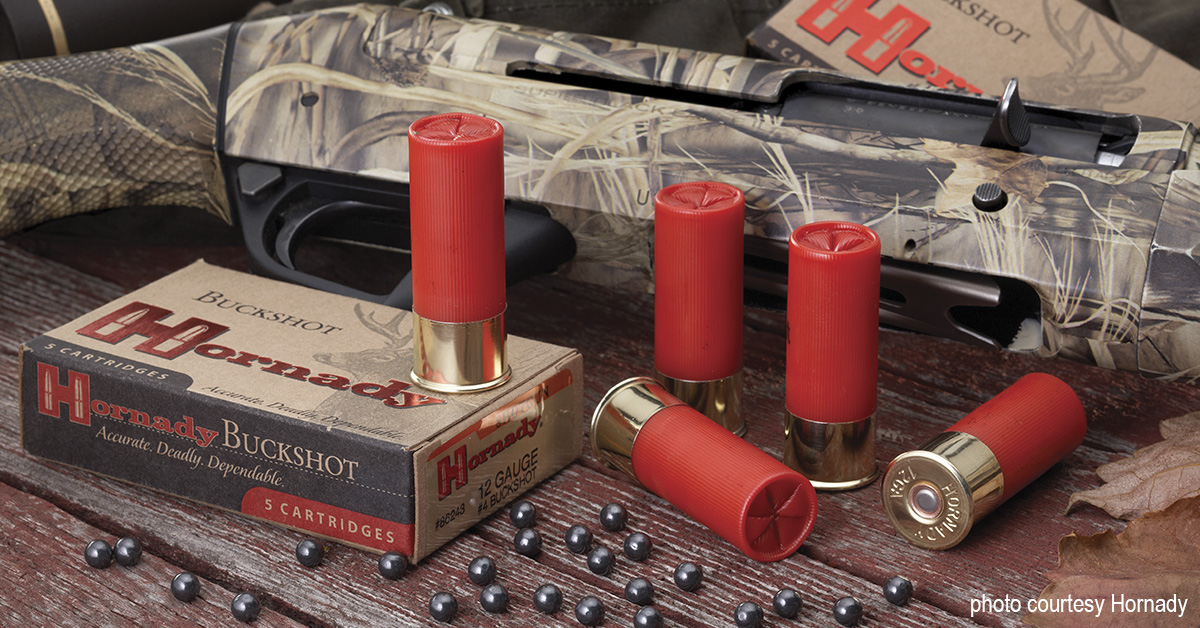
One piece of advice: use buckshot. Birdshot is for small animal game hunting.
The evidence points to 00 buckshot stopping the fight in a majority of instances with a single hit if delivered to center mass. The standard pump-action shotgun with an 18-inch barrel (my agency ordered the optional 20-inch barrel, which the FBI also favored) offers excellent handling and high hit probability. So, why mess with success?
In the area of shotguns, we have one of the worst tactical faux paus and misapplications I have seen! These are the mini shells offered by several makers. I can only ask, “Why?” In the Mossberg 590 standard model, magazine capacity is five shells and eight with the extended magazine. By loading mini cartridges, capacity is increased to eight and twelve rounds, respectively. Energy and payload are drastically reduced. Each individual shot is much weaker compared to full power or even reduced power buckshot. While 00 buck (even #1 or #4) is a great home defender, reducing velocity and payload doesn’t seem a wise thing to do. There are plenty of 2 ¾ inch reduced recoil loads from Federal, Fiocchi, and Hornady that offer excellent patterning and reliability.
Reliability is the big R. Mini shells do not feed in any repeating shotgun I have tried (reserving judgement on the new Mossberg 590S). This is ridiculous! Depend on a shotgun that is reliable and a load that is proven. That is so simple it is difficult to grasp why some strive to downgrade the shotgun’s efficiency. They don’t understand shotguns is the only conclusion.
Carefully consider the balance of power, control, and capacity. Recreational shooting is one thing, but personal defense isn’t a game.


